A report on the 2019 LANR/CF Colloquium at MIT
30-years after Drs. Martin Fleischmann and B. Stanley Pons declared the existence of an unknown type of nuclear reaction occuring between electrolyzed palladium and heavy water, research into understanding the Anomalous Heat Effect has grown into the discipline of Condensed Matter Nuclear Science with experimental results beyond what anyone could have imagined.

Difficulty in reproducing the experiment caused the topic to be banned from federal funding opportunities and peer-reviewed science journals for the duration of their existence, nevertheless CMNS scientists have documented effects such as fusion-sized excess heat from tiny table-top cells generating no deadly radiation. They have achieved the alchemist’s dream of nuclear transmutation of elements, even finding biological systems that transmute elements. Experiments based on the work of Drs. Martin Fleischmann and Stanley Pons have generated coherent photons, maser-like emissions, and a host of other nuclear phenomenon occurring in solid materials at relatively low-temperatures.
Now, the field that offers so much towards solving humanity’s energy and material woes is starting to get the attention it deserves, and resources are turning towards solving the biggest scientific question of our time and using that knowledge to create a new energy technology that will transform the world.
Read Celebrating 30 Years of Cold Fusion Science: The 2019 CF/LANR Colloquium at MIT [.pdf] by Christy L. Frazier Infinite Energy #145 May/June2019
Robust support and resources boost range of results
The US Department of Energy DoE and the US Patent and Trademark Office USTPO initiated decades of drought for basic CMNS research with a no tolerance policy for anything “cold fusion”, and up until recently, neither agency officially accepted the reality of this reaction. But the USPTO is accepting and approving more small, innovative nuclear reactor designs within the designation called Low temperature nuclear fusion reactors, e.g. alleged cold fusion reactors than ever, despite still battling specific cases.
In the Glossary of Terms, cold fusion is defined by the USPTO as “Nuclear (fusion) reactions taking place at ordinary temperatures”. David French wrote on this designation in 2012, but a new analysis of applications of this type shows shows the number of approvals in this category rising.
This was reported on by former-USPTO Examiner Richard Chan at the 2019 LANR/CF Colloquium at MIT, a two-day meeting held on the campus of the Massachusetts Institute of Technology over the 30th anniversary of the news briefing by Drs. Martin Fleischmann and Stanley Pons on their discovery.
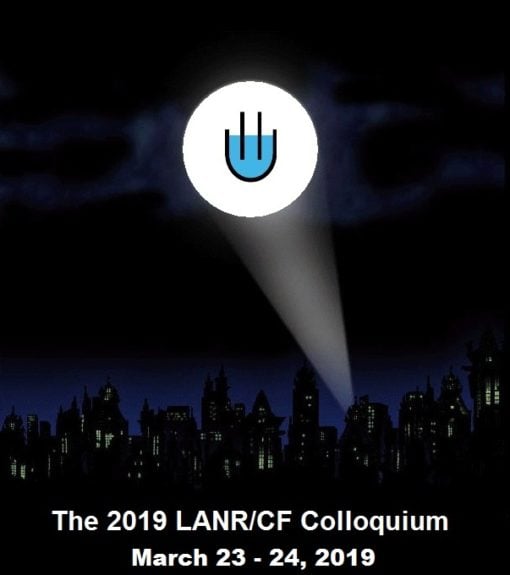
The event was organized and co-sponsored by Dr. Mitchell Swartz and Gayle Verner of JET Energy, and Dr. Peter Hagelstein of the Research Laboratory for Electronics at Massachusetts Institute of Technology. Participants were treated to a program that included top CMNS experimentalists and theorists from around the world.
International scientists and longtime original researchers presented a tour-de-force of frontier work in condensed matter nuclear science. Some results had been presented at the 21st International Conference on Condensed Matter Nuclear Science ICCF-21 last June, but at the 2019 Colloquium, new developments in theory were heard, and experimental work was more tightly summarized with new positive data from the last year added.
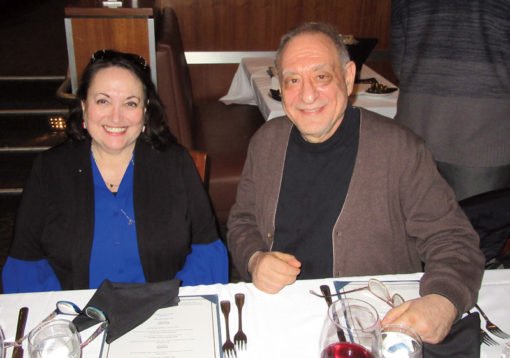
Colloquium Co-host Dr. Mitchell Swartz began the event with Why CF/LANR is Important and then gave several talks throughout the two-days focused on the engineering aspects of the NANOR, a tiny, reliable, low-wattage unit that is being designed and tested for its commercial potential.
There were short, quick presentations where lessons learned were inventoried at various stages of development.
Two States Characterize and Control Active CF/LANR Systems, D-Line Emission from Active CF/LANR Preloaded NANOR-type Components, Importance of D Flux (Q1D to Motors) and Preloaded NANOR-type components (from teaching components to masers). [See also ICCF-21 video Aqueous and Nanostructured CF/LANR Systems Each Have Two Electrically Driven Modes and ICCF-21 video Personal Experiences During Many Years of LENR Experiments]
Co-host Dr. Peter Hagelstein commemorated the 30-year anniversary by sharing an overview of the problems the announcement cold fusion posed to conventional science with the lecture Physics Issues, Key Experiments and Mechanism, describing some of the key experiments that inform today’s theoretical thinking.
Watch Dr. Peter Hagelstein Physics Issues, Key Experiments and Mechanism
He also talked about PdD and PdH Phase Diagrams. [See also ICCF-21 video Statistical Mechanics Models for the PdHx and PdDx Phase Diagram with both O-site and T-site Occupation]
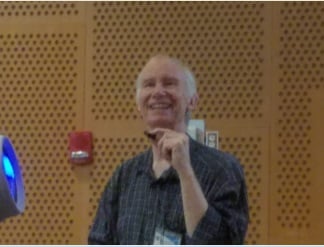
There was excitement over recent modeling breakthroughs in the excitation transfer ideas, outlined in his lecture Phonon-nuclear coupling, excitation transfer, and applications which have conformed with experimental evidence and
offer a path to modeling the unique release of energy from this newly-discovered nuclear reaction. [See also ICCF-21 video Phonon-Mediated Excitation Transfer Involving Nuclear Excitation]
Watch interview with Dr. Peter Hagelstein at the 2019 LANR/CF Colloquium at MIT
Florian Metzler, who’s working with Dr. Peter Hagelstein at MIT, presented Update on MIT phonon-nuclear coupling experiments describing the process that will confirm the claims. [See also ICCF-21 video Observation of Non-Exponential Decay of X-ray and γ lines from Co-57 on Steel Plates]
But while CMNS experimentalists and theorists were reporting on the state of the field, their very success is riding a wave of attention and funds flowing into research. Concurrent with the increased number of a patent filings in the Low Temperature Nuclear Fusion category, private capital is moving to do what federal funds wouldn’t, securing sections of basic scientific research that are incrementally advancing towards usable technologies in the near- and long-term.
At least four active investors were at the Colloquium getting updates on their projects. Michael Halem of LENRInvest, Dewey Weaver representing Industrial Heat, Hideki Yoshino of Clean Planet, Inc. and Carl Page of Anthropocene Institute all attended the full two-days of lectures by scientists who are looking to engage in more collaborative work.
Dr. Robert Duncan, Professor of Physics at Texas Tech, where a heat-helium correlation, among other experiments, had been announced in 2014 was also in attendance, though there was still no outcomes published from that project.
Watch interview with Dr. Robert Duncan at the 2019 LANR/CF Colloquium at MIT
Industrial Heat continues diverse support in experiments and theory
Industrial Heat has been funding several LENR research projects for about seven years. A group photo with some of the scientists IH works with was taken at ICCF-21 and published in the 2019 LENRIA Calendar.
The mix of basic research and commercial aspirations shows the variety of work they fund. Dennis Cravens, Dennis Letts, Tom Claytor, and George Miley (who weren’t at the Colloquium at MIT) are primarily experimentalists who presented new, hotter results at ICCF21 [video]. Student researchers working in the lab with Professor George Miley at University of Illinois Urbana-Champaign are supported, too.
Clean Planet, Inc starts new round of collaborations
At the Colloquium, Dr. Yasuhiro Iwamura presented Recent Advances in Heat Generation Experiments using Nano-sized Metal Composite and Hydrogen Gas with newer, positive excess heat data from the repeatable and replicated experiments with the twin Metal Hydrogen Energy reactors. [See also ICCF-21 video Anomalous Heat Effects Induced by Metal Nanocomposites and Hydrogen Gas]
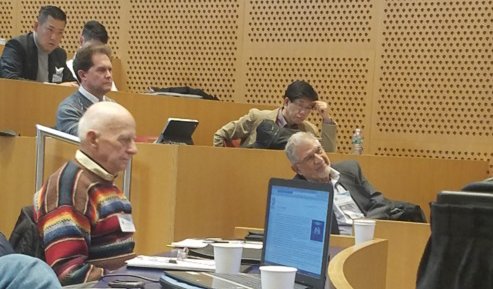
Famous for his nuclear transmutation research, which he still continues in partnership with Mitsubishi Heavy Industries, Dr. Iwamura is lending his engineering expertise to the design of excess heat generators in the Condensed Matter Nuclear Reaction Division of the Electron Photon Research Center at Tohoku University.
Watch interview with Yasuhiro Iwarmura at the 2019 LANR/CF Colloquium at MIT
Establishing that CMNS division at Tohoku was due in part to the work of Clean Planet, Inc. and Dr. Iwamura was accompanied to the Colloquium at MIT by Hideki Yoshino, the CEO of Clean Planet. Over the last several years, Clean Planet has put together the largest collaborative LENR project on the globe, involving several university and industry labs in Japan who partnered together for a series of successful replications over a two-year program, showing what can happen when multiple laboratories work together.
Read more about the work of Tadahiko Mizuno, Akito Takahashi, Yasuhiro Iwamura and Hideo Kozima.
Now with new funding, they are beginning another set of coordinated excess heat and nuclear transmutation experiments, and it appears that Anthropocene Institute will be assisting them.
“Dr. Iwamura has a terrific approach, and I’m looking forward to working with them – and anybody else who is making good progress”, says Carl Page, President of the Anthropocene Institute.
Anthropocene Institute co-sponsored the 2019 Colloquium at MIT and President Carl Page gave a talk Athropocene Institute, Clean Energy and Cold Fusion [.pdf] about his perspective and plan for nothing less than an overhaul of the global energy landscape.
Watch Carl Page Clean Energy and Cold Fusion
Anthropocene Institute sees new nuclear as solution to climate change
“Anthropocene Institute exists to try to accelerate the adoption of clean energy technology of any sort that can get us well ahead of climate change so we can fix climate energy for sure, with enough energy for a safety margin,” he says, “in case something unexpected happens.”
President Carl Page made clear the priorities of the Institute, which echoed many of the researchers at the Colloquium: to provide clean, dense energy that addresses climate change and initiates an economic renaissance to lift global populations out of poverty, all by deploying new small nuclear technology, as soon as possible. While he includes designs such as molten salt reactors, according to Page, LENR is the “best and most desirable solution”.
“I’m a climate hawk,” he said in his presentation. “I’m one of those people that believes that IPCC is a conspiracy of scientists lying to us about climate change – but they’re understating the problem. We actually have to get completely off of fossil fuels in 10-12 years if we can, and that means that we have to deploy atomic energy way faster than most people believe is feasible.”
“One of the problems I look at for my schedule is ocean acidification. People worry about temperature increase, and it’s complicated. It takes a big computer to tell you how climate changes.”
“A one line equation tells you when ocean water changes to sparkly water, and it turns out the ocean plankton doesn’t like sparkly water at all.”
“The schedule we have to worry about is somewhere between 2035 and 2050, the plankton will change its way of life.
“It may not decide to kill us – but it could; it might make hydrogen sulfide instead of oxygen. That would be bad if you’re a warm-blooded creature.”
“It probably won’t, but nobody knows. The plankton gets to decide and it hasn’t made up its mind yet. I vote for not giving the plankton the option to choose our fate.”
Rate of decarbonization isn’t fast enough
“We are in a race. Every nation has to decarbonize – I say in twelve years. Some nations already have; I don’t have Sweden on this, but it would probably be at top of the chart. “
“We are all in a race towards zero percent carbon.”
“The only one to use technology to get there is France, because they’re 80% nuclear and 20% hydro. And then you have Germany, which is completely going backwards: they’ve invested a whole lot in wind and solar – you can see that tiny little corner. (These are years going by to the right in each bar). And here’s Japan, which was pretty good, about middle of the pack, and then they got to be as bad as Australia because of Fukushima.”
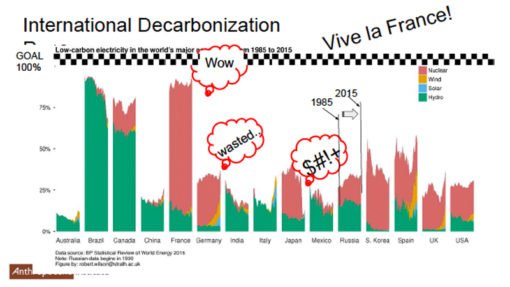
“We have spent enough money in California and Germany to completely zero out carbon from our sectors, so we can do it, we just didn’t choose the right technologies.”
“We can’t let this kind of thing slide anymore. That’s why we’re relying on LENR and other forms of innovation in energy.”
That passion is driving Anthropocene to support multiple LENR-based projects, and seek collaborations in both basic research and technology development. Brillouin Energy Corporation was the first lab to get his attention, and with Anthropocene support, Brillouin has achieved multiple benchmarks of success, continually upping their prototype heat generator Hot Tube power output and efficiency.
But Carl Page wasn’t always so optimistic.
“I was very resistant to even looking at LENR because I was pretty sure that physicists knew it was impossible. But I had to look back through the contexts and figure out why people were saying that. I had to figure out who was acting like a scientist, and who was acting like an ideologue, or defending academic turf and funding.”
“I was introduced to Robert Godes and I didn’t even talk to him for a year until I studied the back story, and until I figured out that there was room in physics for this to exist, I refused to talk to him!”
“But I’m obviously pretty convinced now.”
Robert Godes is the President and Chief Technical Officer of Brillouin Energy, as well as the inventor of the Hot Tube, a LENR heat generator.
“It became clear to me that it was possible; that there was a hole big enough in physics to accommodate this observation. And it was also apparent to me that we had passed over most of the relevant important technologies.”
LENR is the #1 choice of all other innovative nuclear technologies
Dr. Francis Tanzella, now retired from SRI International and consulting privately with Energy Research Center reported on the Hot Tube last June, announcing 5 Watts excess thermal power with a 1-2 COP. It was not a commercially-viable output, but controllable, and on-demand, something unique in the LENR research community. [See ICCF-21 video Nanosecond Pulse Stimulation in the Ni-H2 System]
By December, the Hot Tube had realized an increase to 50 Watts excess thermal power with a 2+ COP.
At the Colloquium on March 23 of this year, Dr. Tanzella reported in Update from Brillouin Energy [.pdf] another hike in Hot Tube thermal excess power to 80 Watts.
Watch an interview with Francis Tanzellz at the 2019 LANR/CF Colloquium at MIT
Carl Page said, “Robert Godes has a different perspective in that, he’s not trying to get a science win like I kind of would do, but he’s trying to build a practical reactor that doesn’t have material degradation. He’s trying to make sure he can carry the heat away really well, and that there’s no electro-migration of materials in the catalyst, so he’s using an AC impulse function instead of a DC one, to make sure the electro-migration gets healed.”
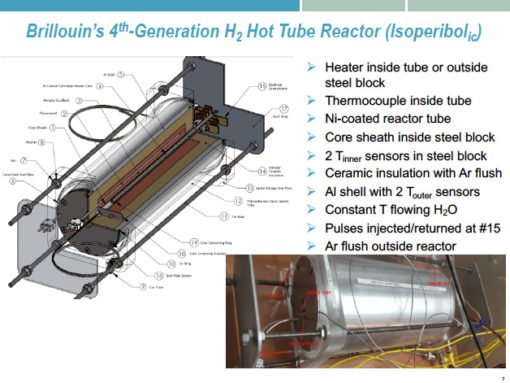
“He doesn’t want to make any reactions that are sustained by adding temperature, because if the reaction is creating heat, it’s obviously hard to control, expecting heat to control it. So the electrical stimulation function is the option here.”
“He’s got a computer model of the reactor that predicts within 0.1% what the temperature is supposed to be at any given time. So in the old days, they would have to set up the reactor and wait for it to stabilize, and then use the calculator to figure out how much power they were getting. Now, they just have a readout that says how much power they are getting at all times. They can play with the input parameters and the readout is compared with the model and anything unexpected that happens shows up immediately. ”
“That’s a tool available for others to use, too. It’s called System ID or System Identification. And basically you don’t have to tell the computer what you think is going on in the reactor. You let it learn, and then, see if the model predicts that. And then if a thermometer starts to break, you know it right away. It’s a really great system.”
To avert the worst of climate disaster and re-kindle a new economic paradigm, Carl Page sees LENR as superior to all other innovative nuclear technologies, “because that’s the cleanest I’ve ever seen”. Plan B is the small type nuclear reactors like those that use hot molten salt.
All carbon-free options are being pursued
TerraPower is a company developing next-generation nuclear power systems like the Molten Salt Reactor within its own lab, as well as assisting other labs, and was founded by the very resourceful Bill Gates, who resides as Chairman of the Board. [visit] Searching the number of patent apps in the G21B3/00 designation and showing 1,380 results reflects these numerous technologies that have been developing outside the orbit of CMNS science, and the consequence of such able and venturesome support.
While Anthropocene Institute favors LENR technologies, all the alternatives to decarbonize are being explored. President Carl Page outlines the back-up plan. “Now if the LENR community fails, there’s still a good option, the Fission Molten Salt Reactor fueled by Uranium or Thorium. This is the thing that President JFK was trying to build, and that 73% of the American people would support if anybody were building them, as polling data shows.”
In an MSR, uranium or thorium is dissolved in a hot salt liquid. Heat is captured while it fissions within the mix. This type of technology would allow the clean-up of existing stockpiles of uranium nuclear waste to be processed as fuel for an MSR.
This is good news to environmentalists, because Molten Salt Reactors are nothing like the pressurized water, conventional nuclear power plants of yesteryear.
“The fission industry with the light-water reactor is pretty much dead – except in South Korea and China – because it’s hard to make an unsafe system safe, by adding parts and complexity,” reports Carl Page.
“If somebody pokes a hole in a Molten Salt Reactor, the fuel might spill out on the ground, but it sits there – there’s no fallout cloud, there’s no steam explosion, there’s no hydrogen-zirconium disassociation problem. There’s no blowing the roof off with hydrogen, so it’s quite safe.”
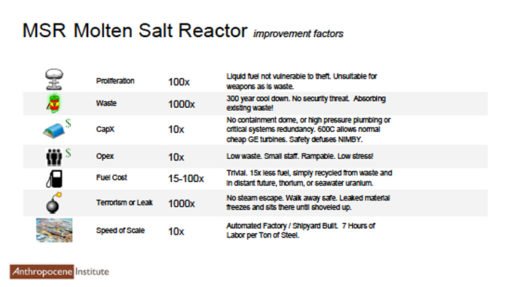
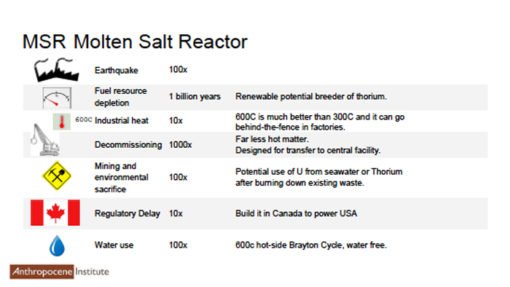
“The MSR can be deployed really fast because it doesn’t require heavy construction – there are no pressurized reactor vessels. You can build many of them per month in a modern shipyard quite easily. China is getting started on MSRs for water-saving power plants, and for warships.”
“That will happen if LENR doesn’t.”
Carl Page says that “A sub-goal I like to focus on is 1 cent clean energy. Because right now, coal might be 5 cents, and wind is 3.5 cents in new purchases, solar is about 3.7 cents in desert purchases, so if we were trying to sell you a light-water nuclear reactor and they say 10 cents a kilowatt hour, they’re not going to get anywhere, right?”
“If we’re envisioning LENR solutions and anything else, we have to aim at the price that renewables will get to. Even though nuclear energy has advantages that renewables don’t, selling it is still hard against the market.”
The people are ready for change, but are physicists?
“It’s important to be reminded why there are so many people opposed to nuclear power, and I admit as a college activist I was opposed to nuclear anything, but that was because I was really scared about the arms race. Today’s situations are really different, and we need to get over it.”
A survey done by the Anthropocene Institute shows that most Americans in the U.S. would welcome a new type of nuclear technology.
“It turns out that Americans are afraid of fallout clouds and meltdowns, but they’re not actually afraid of the word nuclear“, reports Page. “The reasons that people who don’t like nuclear don’t like it are varied, but LENR is a winner in all these.”
“Most Americans are looking for good innovation. In fact, if you promise the kind of nuclear that JFK was trying to build before Nixon shut it down – the molten salt reactor – 73% of Americans say they would love that. The word didn’t turn them off.”
“We need to have a lot more people speaking out correctly on what energy systems are safest, as well as cheapest. We shouldn’t be relying on climatologists to tell us what energy technologies are safest, but we’re not out there tootin’ our own horn, so we have to get a lot better at that.”
“MIT has been talking a lot about innovative nuclear. They haven’t gotten as innovative as LENR yet, as this reports, and this is a concern, but this is quite a good report”, he says referring to The Future of Nuclear Energy in A Carbon Constrained World issued late 2018. [visit]
“The fact that classical mechanics with a few corrections from quantum mechanics explains everything that plasma physicists understand and it predicts experiments to nine decimal places, it’s an amazing accomplishment. But it doesn’t work in solid materials at all.”
“Physicists are right to object that if LENR was real, you’d see it in nature. And when you’re looking through astronomy, it’s sometimes hard to see a LENR signature.”
Showing a diagram of the interior of the Earth, he asked the audience of CMNS scientists, “Why is the solid part hotter than the liquid part? It’s not fission, and it’s not fusion. Do you guys know any reactions that might look better in a solid than in a liquid? Because the physicists don’t.”
Then he cited data recently observed in Japan that shows “there are neutrinos coming from the direction from the core of the Earth that shouldn’t be coming from the core of the Earth, because the core of the Earth would shield it. In fact, physicists say they have changed the standard model of physics to explain this crazy observation!”
“However, suppose there was a reaction that makes neutrinos located at the core of the Earth. Then we don’t have to change the standard model of physics. So I’m guessing that we’ll be able to see a lot of new stuff in nature once when we really get our heads around when the LENR reaction happens. ”
There happened to be another meeting of physicists at the same time as the LANR/CF Colloquium, and physicist John Wallace, co-author of Yes Virginia, Quantum Mechanics Can Be Understood: How Nature Treats Information [visit] who spoke at the Colloquium on Baryon Charge Density [.pdf], was hopping back and forth between the two meetings. He indicated there “was some curiosity there” at the physics meeting, and that several physicists stopped by the Colloquium, too, though there was no word on their thoughts about the talks.
Carl Page likes to remind people that “with LENR, we’re in a place where experimentalists are in the drivers seat, and physicists are really uncomfortable with that. But that’s how we got through thermodynamics: scientists didn’t tell the steam engineers anything useful, rather, thermodynamics was curve-fitting into what the engineers had already figured out.”
Technology and applications that can’t wait are developing together
Larry Forsley gave a wide-ranging talk titled A Reliable Protocol for Inducing Nuclear Reactions in Condensed Matter which included an update on his work with the fusion-fission hybrid reactor being developed in partnership with NASA for space power, the benefit being that the most dangerous and expensive material is replaced with a clean LENR cell. Slides from the presentation show the reactor core features and comparisons.
USPatent 8,419,919 was issued in 2013 for the System and Method for Generating Particles detailing the original design for the GeNiE.
Larry Forsley says that, “This hybrid technology embraces the NASA Kilopower and previous Prometheus nuclear reactor programs but requires neither low nor high enriched uranium (LEU or HEU) fissile material. Previous NASA power conversion, shielding and heat dissipation research and development is applicable to this new reactor core.” [See also ICCF-21 video Hybrid Fusion-Fission Reactor Using Pd/D Co-Deposition and ICCF-21 video Space Application of a Hybrid Fusion-Fission Reactor]
Another project he announced was a A STEM (Science Technology Engineering and Math) Trackers Kit initiative intended to help train students to use the technique of co-deposition. The project is being developed with Dr. Pamela Mosier-Boss and assistance from Anthropocene Institute.
Watch interview with Dr. Larry Forsley at the 2019 LANR/CF Colloquium at MIT
Student participation to rise with new STEM Trackers Co-deposition Kit
From taking sound and video from an active cathode that allowed them to hear and see the “mini-explosions” of power, to generating neutrons detected with CR-39, Dr. Stanislaw Szpak and Dr. Pamela Mosier-Boss, who initiated and developed the co-deposition method, derived two decades of successful research at the Navy SPAWAR electrochemistry lab from the approach . There is “independent reproducibility and replication across multiple laboratories in five countries”, according to Forsley.
“Consequently, we’re developing an undergraduate Science, Technology, Engineering and Mathematics (STEM) enrichment program using the Pd/D co-deposition protocol in conjunction with Point Loma Nazarene University (PLNU) in San Diego, CA. A student presented some of their data in a poster session at the march meeting of the American Physical Society,” said Larry Forsley.
The STEM Trackers Kit originated with undergraduate chemical engineering seniors at University of California, San Diego over a three-year period. Students successfully used the protocol to produce energetic particles as detected by CR-39. The paper Energetic Particle Emission in Pd-D Co-deposition An Undergraduate Research Project to Replicate a New Scientific Phenomenon [.pdf available] reports on that project.
Sadly, there are few women involved in this science. In fact, there may have been only two women officially registered for the event. Gayle Verner of JET Energy, Inc co-organized the event was there of course, and one other woman registered. Initiatives to engage students is an important task for CMNS scientists, not only to educate more young people about this exciting science, but girls, too.
Lectures on Experiments and Theory
There were two lectures on Helium production in Pd-D systems.
Dr. Dimiter Alexandrov presented Cold Fusion Synthesis of Helium Isotopes in Interaction of Deuterium and of Hydrogen Nuclei with Metals [.pdf]. In the course of his materials research, he had been performing experiments using palladium and deuterium, and discovered – by accident – that helium was being produced! Since then, he’s been studying the parameters of the repeatable experiment. At the Colloquium he also described the methods used to determine it was helium production, including mass spectroscopy. [See also ICCF-21 video Nuclear Fusion in Solids–Experiments and Theory]
Dr. Melvin Miles was scheduled to talk on Production of Helium in Cold Fusion Experiments [.pdf] At the last minute, Dr. Miles was unable to attend, so I was recruited to give his talk. It was about a simple equation he developed to compute the theoretical amount of helium that should be generated in Pd-D systems, given the excess power generated in Watts and the current in Amps. This equation assumes all the excess power is derived from the helium generation, neglecting other reactions that may be taking place. With that input, you can compute the amount of Helium-4 generated in parts per billion.
Dr. Miles then re-analyzed his early heat-helium data and compared the theoretical amount to the actual amount of helium measured. Not surprisingly, the computed values followed the measured values. [See also ICCF-21 video Excess Power Measurements for Palladium-Boron Cathodes]
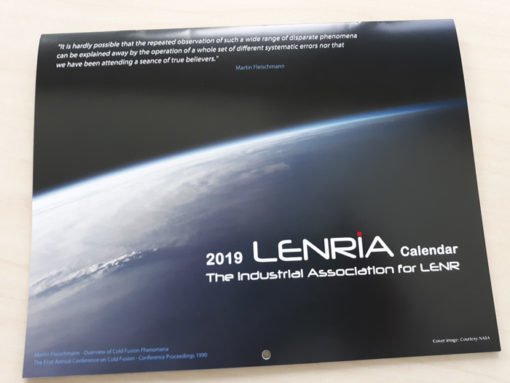
in Colorado, US last summer, and, they publish the LENRIA Calendar. The growth of LENRIA’s participation in the CMNS community from advocacy into scientific research continues with LEAP, a testing project using the Naval Research Laboratory’s palladium-boron cathodes, which Dr. Melvin Miles had used previously with success.
Working together on a theoretical model, Thomas Dolan presented Heavy electron catalysis model [.pdf] right before his colleague Anthony Zuppero presented Applications of the model to experimental data. [See also ICCF-21 video Electron Quasiparticle Catalysis of Nuclear Reactions]
Konrad Czerski talked about Crystal Lattice Defects and Threshold Resonance of D-D Reactions at Room Temperature. [See also ICCF-21 videoInfluence of Crystal Lattice Defects and the Threshold Resonance on the Deuteron-Deuteron]
I missed the talks by Vladimir Plekhanov with Experimental study of the strong nuclear interaction via re-normalization, Jozsef Garai on a Physical Model for Lattice Assisted Nuclear Reaction, and Jeff Dricscoll, who talked about Mills’ Theories, though I was able to get a one-on-one with Jeff Driscoll for the documentary.
Interesting new science was presented by Keith Fredericks in his lecture Elliptical tracks: Possible Evidence for superliminal electrons [.pdf] which looked at strange tracks detected on photographic emulsions. [See JCMNS 15 Possibility of Tachyon Monopoles Detected in Photographic Emulsions]
Brian Ahern talked about Anharmonic Motion and Magnetism in LANR, which contained a section about his analysis of an unusually powered car. [See .pdf Energy Localization The key to Understanding Energy in Nanotechnology & Nature]
Dr. Hysen Blloshmi spoke epically on the History of one Significant Invention [.pdf] which included details on his cold fusion generator which he reports was able to power the desalination of seawater for 400 days. Thomas Ciarlariello spoke on Muon Catalyzed fusion from Prior Art to Future Space Planes and had this hand-out [.pdf].
Robert Smith, Jr. talked about the Impacts on the Rate of Knowledge in LANR.
On a related topic, Dr. Thomas Grimshaw gave an overview of the LENR Research Documentation Initiative [20Mb .pdf] which is currently servicing and/or finished a total of 11 different projects.
Imagine 30-years of data on varied file formats, including 5″ floppies and software from 1990, and you can understand the importance of capturing the early record of research in this field, especially as original scientists get older.
Cold Fusion Now! was on the scene to get video interviews for a documentary movie to begin production in 2020. I was able to talk one-on-one with scientists such as Sveinn Ólafsson who spoke on Experimental techniques for studying Rydberg matter of Hydrogen. [.pdf][See also ICCF-21 video What is Rydberg Matter and Ultra-Dense Hydrogen?]
I taped video statements from longtime researchers Francis Tanzella, Francesco Celani, Larry Forsley, and Brian Ahern. Also, Yasuhiro Iwamura, Robert Duncan, Dimiter Alexandrov, Mathieu Valat, and Thomas Grimshaw spoke with me about their thoughts on this thirty-years of research.
Lectures were captured by videographers Richard Chan and Frank Ling, who also recorded some interviews. Videos of the presentations are expected to be available at http://www.lanr2019.com/.
Turning agony to ecstasy accompanied by cocktails
Saturday night was a party at Legal Seafood in Cambridge, a block from the MIT campus, to celebrate the decades of historic revolutionary science performed by a community of outcasts turned heroes. Delicious appetizers, drinks and dinner were served, and it was good to know it was Legal.
Former-USPTO Examiner Richard Chan, who gave a patent update at the Colloquium – and performs more functions than a Cray – was ready with equipment to DJ that night! Would the set of music put together for the party be realized? Alas, the room was not appropriate for that.
It turned out that there was so much to talk about, the conversations reached high decibel levels, so nobody missed the music. It was probably good that there was no dance floor. What might occur when nuclear scientists electrolyze Chardonnay with the Ohio Players?
It wasn’t just Cambridge that partied. Festivity migrated around the world that night. Electrochemist and veteran LENR researcher Dr. Michael McKubre shared a photo of he and Dr. Huw Price celebrating a toast in New Zealand. [See H. Price Icebergs in the Room Cold Fusion at 30]
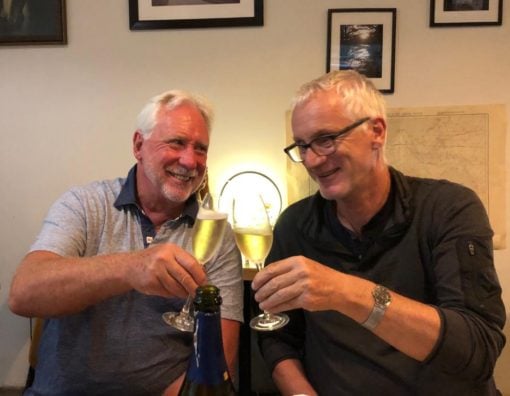

Cold Fusion Now! had special I’m Hot! t-shirts made for the occasion, and gave the Colloquium organizers a prize for their hard work. Then, a lucky player volunteered for our game: Name Three Effects of the Cold Fusion Phenomenon and Win a Shirt! I am not actually sure who it was that played, but he was a real sport and lots of fun, and readily met the challenge, as
determined by the scientists in the room, who judged the answers with three boisterous Yeas and zero Nays.
Happening at the same time around the world, CMNS colleagues at the Russian Academy of Natural Sciences were celebrating “Cold fusion – 30 years: results and prospects” in Moscow. A report was first published in Regnum, but here’s a google-translate of the article to read.
From left to right: A.S. Sverchkov, L.V. Ivanitskaya, A.V. Nikolaev, A.A. Kornilov, A.I. Klimov, I.B. Savvatimova, A.G. Parkhomov, A.A. Prosvirnov, V.I. Grachev, S.N. Gaydamak, S.A. Flowers
The program reviewed the 30-years of Russian Cold Nuclear Transmutation research, referring to what we call LENR, and contained a wish for continued success to their friends around the world. We wish for the same, and CMNS scientists look forward to meeting together at the 22nd Interntational Conference on Condensed Matter Nuclear Science ICCF-22 happening Sept. 8-13, 2019 in Assisi, Italy. [visit]
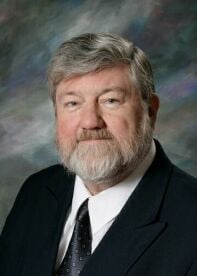
Of course the goup was missing patent lawyer David French, who freely served the community for the last decade and passed away this year. His unique skills, and amenable disposition made him a valuable asset to the field where scientists are brilliant in chemistry and physics, but not so informed on business and law. THANK YOU David.
Over 100 people registered for the Colloquium, and there were more than a few walk-ins throughout the two days. The lecture room in the Strata Building was filled on Day 1, with almost all the seats taken. There was less attendance on Day 2, as many had to leave early to return home for Monday morning.
By 5:30PM Sunday, the Colloquium was officially over, and participants were still hopped up – and numb – from the 48-hour science storm.
Walking around the campus for a last look in the early evening, I came upon Dr. Francesco Celani waiting for his ride. He spoke at the Colloquium on the Advanced version of the “Capuchin knot” geometry [.pdf] and the bump in power he got by putting knots in the straight wire. He was planning to stay another day and roam the MIT campus and bookstores. [See also ICCF-21 video Steps to Identification of Main Parameters for AHE Generation in Sub-Microscopic Materials]
Green LENR future to benefit oceans, wildlife, and global populations
After thirty years, the CMNS field is now receiving essential attention and support for basic scientific research as well as engineering prototypes from several investor groups. The Anthropocene Institute, the newest to bring help and supplies, has come full-circle in their search for carbon-free, energy-dense, ultra-clean power.
“If you don’t envision where you want to go, you’ll never get anywhere. This is what I envision we should have,” says Carl Page.
“We should have great transportation, we should have great food, a lot of it grown indoors because its way cheaper and a higher quality. We should be able to make a lot more wildlands than we have today, because we don’t need all that farmland, especially those growing bio-fuels. We don’t need palm oil for European Diesel, we don’t need corn ethanol.”
“We’ll need to provide carbon-neutral fuels for vehicles we don’t get rid of. We should have room for 12 billion affluent city dwellers, and, we’ll need to provide industrial heat for our industrial way of life. We’ll need to desalinate large-scale; and this is all quite doable. We should fully recycle everything we use, and we should guarantee success for fifty years.”
“In the 80s, people were taught that if too many people were wealthy, the planet would be overpopulated. It turns out that when people get to be middle class, the population explosion disappears. Population explosions happen because of subsistence farmers needing child labor. The moment child labor is not in the money, people stop overpopulating.”
“So we’ve got to get to work on it.”
Teamwork and communication essential to success
The conversion of Carl Page is complete, and it’s unlikely he’ll be backing down from putting LENR front and center in his nuclear energy mix. In fact, he’s advocating a kind of truce, even collaboration, between the differing nuclear approaches. CMNS success will be reached by broadening participation into a wider, mainstream association. The resources that Anthropocene brings to do that are unmatched to anything this field has seen, and Carl Page has a plan to do it.
“The fact that LENR physics is not well-explained – I consider that a software problem, which is the best kind of problem to have. Because once you figure out your software problem, manufacturing is free. So we only have to figure out the physics once, and then, it’s free.”
“That’s not true of hot fusion, because there we have engineering problems. The physics is well-understood, but the engineering is not. Enginnering problems mean costly changes.”
“The hot fusion and the cold fusion people are sometimes a bit competitive”, he says. “But these innovative nuclear groups are start-ups, and most of them are clever, smart, interested people, and they have a business problem to solve. When they get new physics from people who understand condensed matter, it really helps them. Some, like AGNI are actually half-way between cold fusion and hot fusion, where they have a solid target fusion system.”
“…and the thing is, the government is providing hardly any money into any kind of innovative growth in technology. So if we can stop shooting arrows at each others back, and start trying to get the government to be less disruptive towards research in the relevant technologies, it will help us all. Because if they start funding innovative nuclear, and it includes even a shred for LENR, LENR will take the lead, because we just don’t need as much money. They’ll think they’re hurting us by not giving us enough money, but actually, we’ll get ahead.”
“There are other people in Las Vegas that put the penny in the million dollar slot machine that almost never rings, and there are investors similarly willing to take long odds bets, if it’s more than fair.”
Watch video interviews and selected lectures from the 2019 LANR/CF Colloquium at MIT on Youtube.



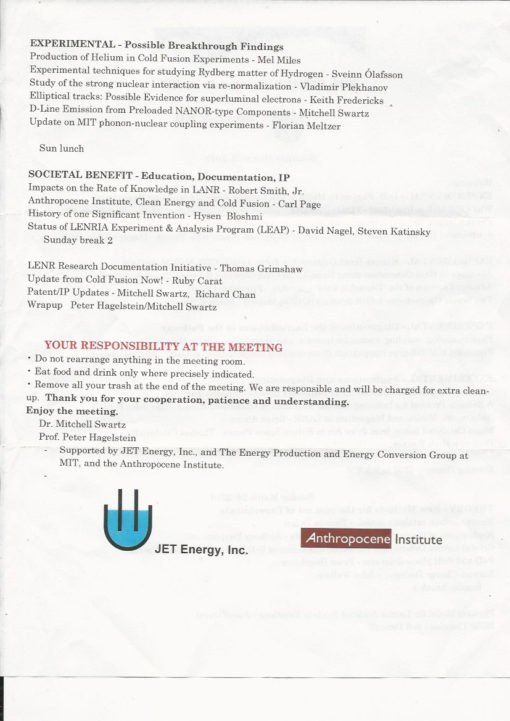

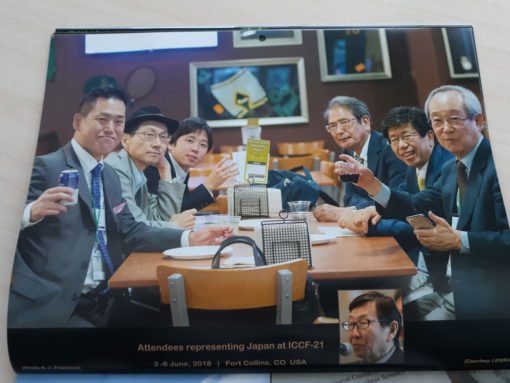

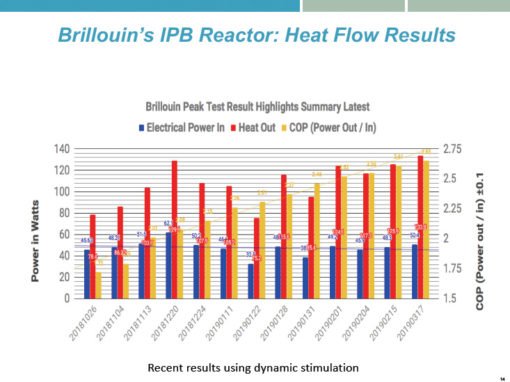

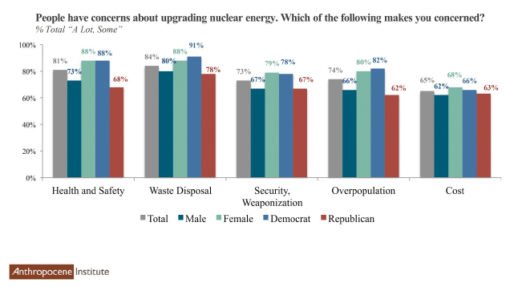
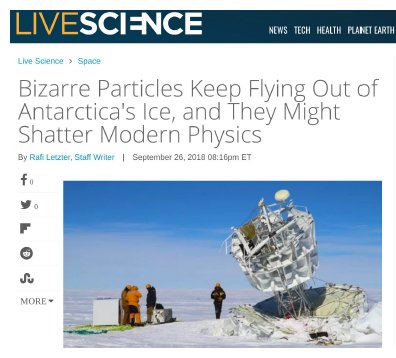

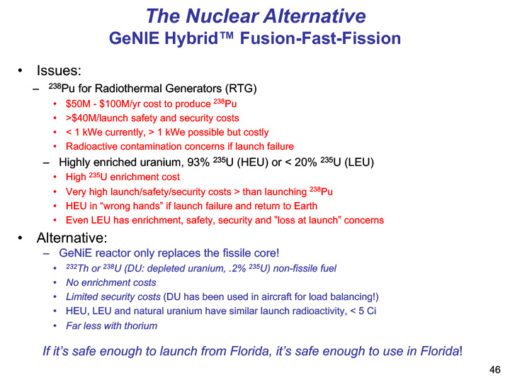

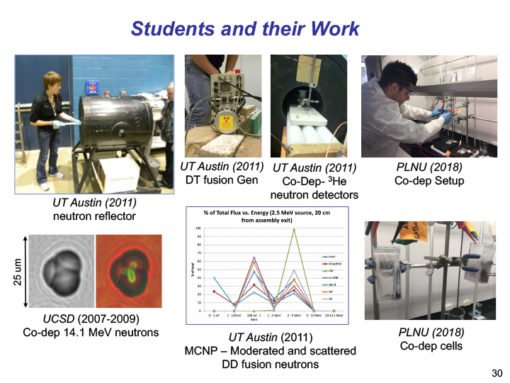
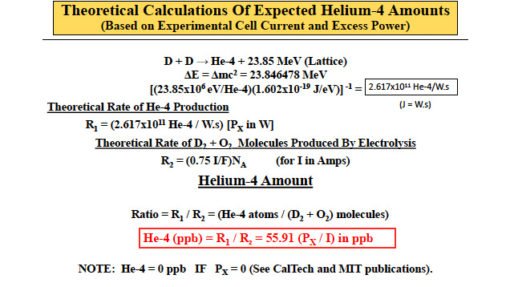
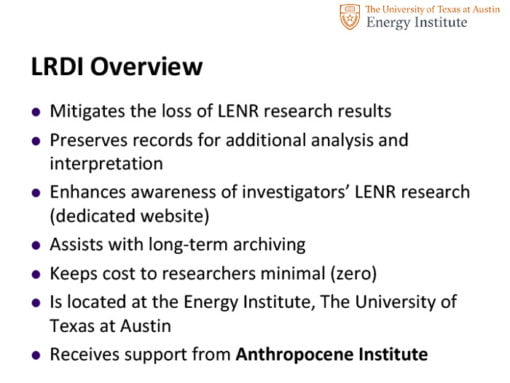
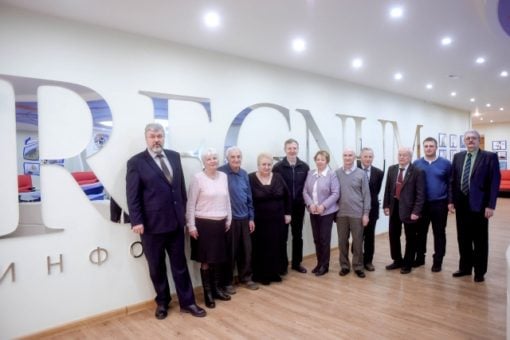
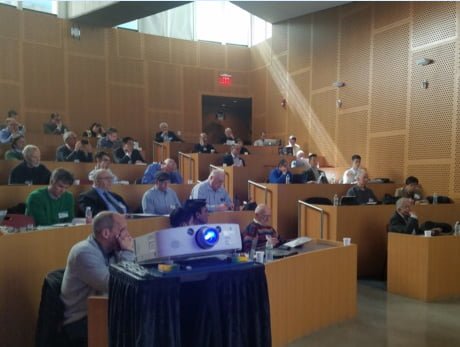
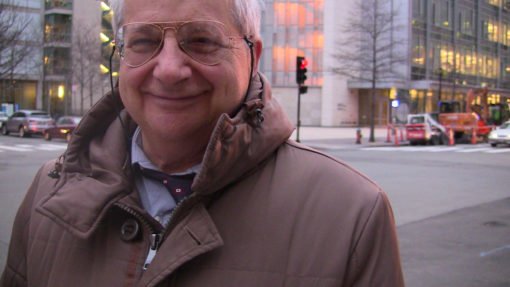
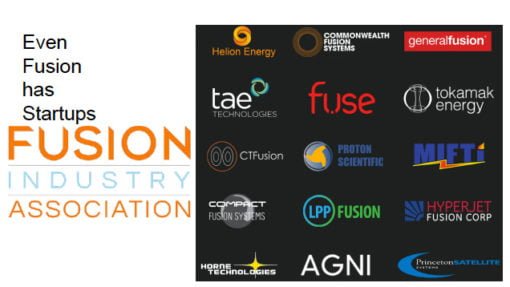
I would like to leave a comment (https://yadi.sk/i/cJ3EFsxO3LXg8w) that I wrote to the article of Huw Price article (under this name, Bertrand Russell, Professor of Philosophy and a Fellow of Trinity College at the University of Cambridge) in the “3 Quarks Daily” on the 30th anniversary of the Martin Fleishman and Stanley Pons press conference (https://www.3quarksdaily.com/3quarksdaily/2019/03/icebergs-in-the-room-cold-fusion-at-thirty.html).